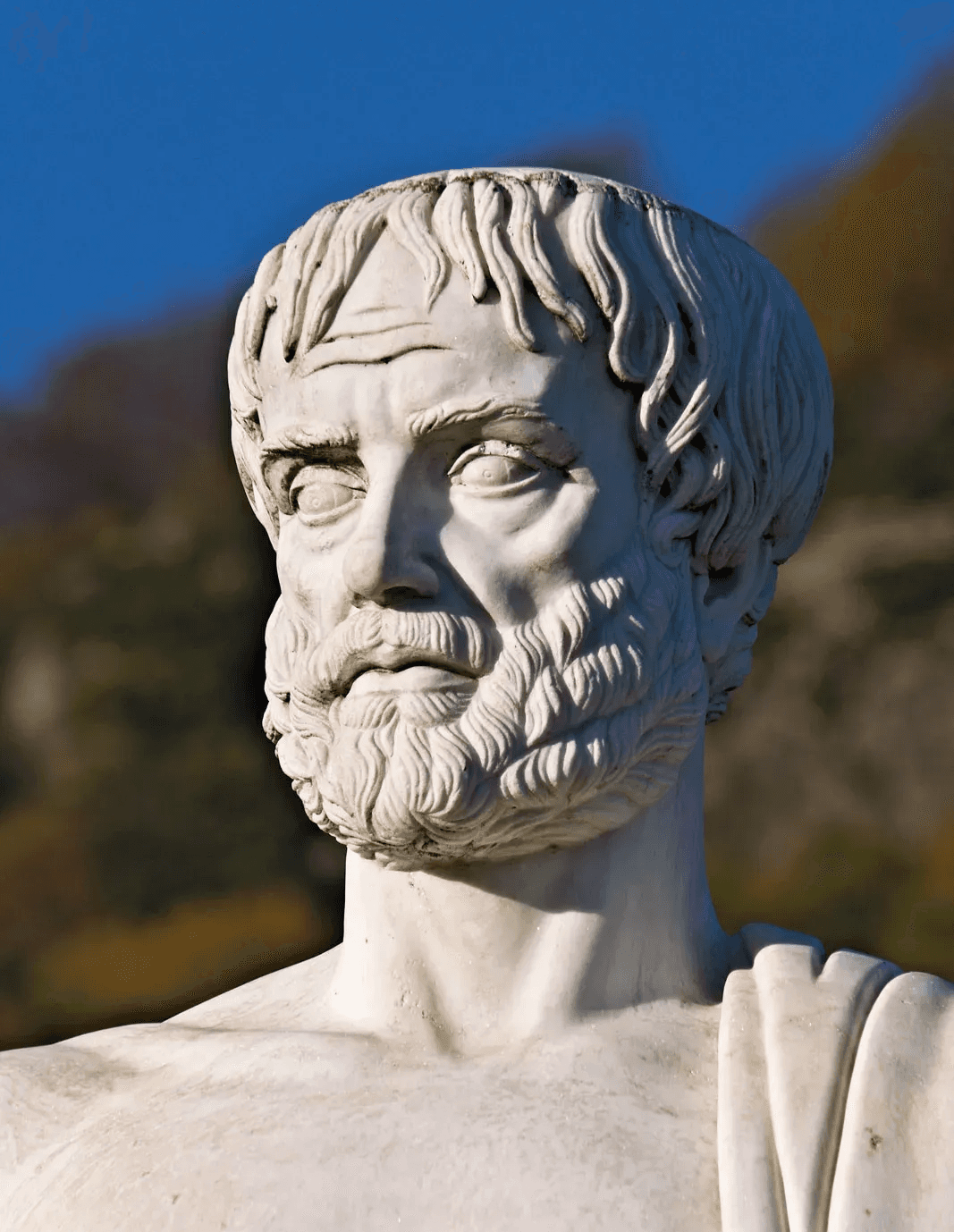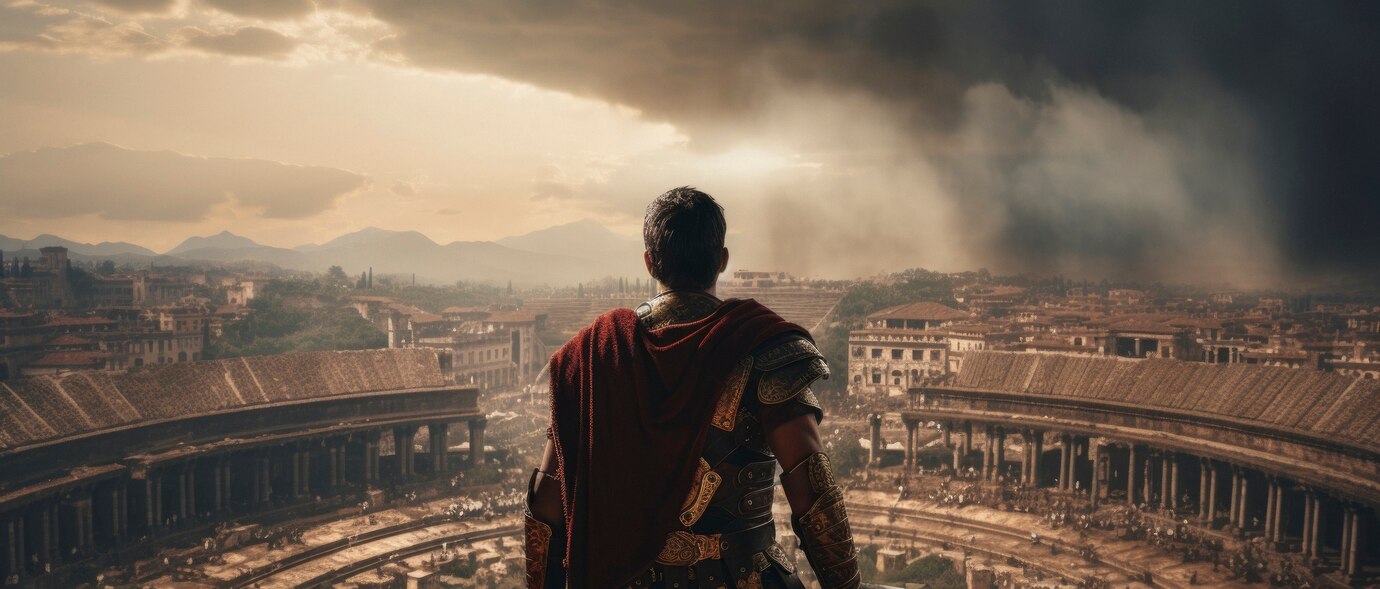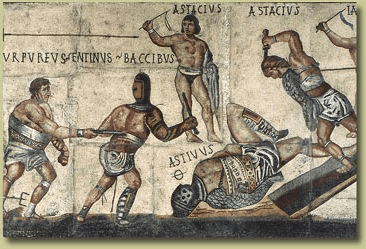Jan 24, 2025
Zain Qureshi
The Ancient Roots of Influencer Marketing: Lessons from Rome and Aristotle
When you think of influencers, the image of carefully curated Instagram posts, viral TikTok dances, and product sponsorships likely springs to mind. But influencer marketing isn’t just a product of the digital age. Its essence has been alive for thousands of years. From the grand forums of ancient Rome to the philosophical schools of Athens, influencer marketing has been shaping opinions, swaying crowds, and promoting products long before social media even existed.
So grab your toga and a goblet of Roman wine, let’s take a look at influencer marketing… the ancient way!
📜 Aristotle: The Original Thought Leader
Long before hashtags and sponsored posts, Aristotle was the epitome of a thought leader. Known as one of the greatest philosophers in history, Aristotle influenced not only his contemporaries but also entire generations to come. His ideas, deeply rooted in logic, ethics, and rhetoric, shaped the foundation of Western thought. And even without the reach of social media, his influence spread far and wide, thanks to his “followers.”

Aristotle’s students, most notably Alexander the Great, carried his teachings across the known world. Alexander wasn’t just a military genius; he was an ambassador for Aristotle’s ideas, spreading them as far as India during his conquests.
Think of it as the ultimate influencer-brand partnership. Alexander used Aristotle’s philosophies to guide his leadership, making them a cornerstone of his empire-building strategy.
Later, Roman intellectuals like Cicero and Marcus Aurelius further amplified Aristotle’s influence. By quoting and applying his teachings, they introduced his philosophies to Roman politics, governance, and daily life.
Aristotle’s “brand” transcended generations because it wasn’t just built on fleeting popularity; it was grounded in timeless ideas. In today’s terms, he was an evergreen influencer.
🏛️ Roman Gladiators: The Original Brand Ambassadors
If you think product endorsements are a modern invention, think again. Roman gladiators, the superstars of their time, were arguably the first brand ambassadors.
These warriors weren’t just fighters; they were celebrities whose fame extended far beyond the Colosseum. Crowds idolised them, and their endorsements carried serious weight.
Here’s how it worked: Imagine you’re a Roman merchant selling olive oil. You strike a deal with a famous gladiator like Spartacus. After a victorious fight, Spartacus publicly praises your olive oil, claiming it’s what fuels his strength. Suddenly, every Roman in the Colosseum wants to buy your olive oil.
It wasn’t uncommon for gladiators to be associated with certain products, from weapons and armour to food and drink. Their endorsements were seen as seals of approval, much like today’s celebrity partnerships with fitness brands or sportswear companies.

Beyond endorsements, gladiators also served as live advertisements. Their weapons, armour, and even hairstyles became trends among the Roman public. Merchants would replicate these styles and market them to fans eager to emulate their favourite warriors. Gladiators weren’t just entertainers; they were walking, fighting influencers.
🎨 Ancient Billboards and Sponsored "Posts"
The Romans were masters of communication, and their version of advertising wasn’t far removed from what we see today. Murals and graffiti served as the ancient equivalent of billboards, promoting everything from upcoming gladiatorial games to local products.
For example, painted advertisements on walls often hyped up specific gladiators, turning them into household names. These murals didn’t just announce events; they glorified the fighters and the products associated with them. Some even depicted gladiators enjoying luxuries like wine or fine food, making those items aspirational for everyday Romans.

Graffiti was another form of influencer marketing. Messages scrawled on walls often praised specific products or gladiators. One piece of graffiti found in Pompeii reads something like, “Marcus’s wine is the best, chosen by the champion gladiator!” It was word-of-mouth marketing, quite literally carved into stone. These messages built excitement and trust, much like user reviews or social media testimonials do today.
💍 The Roman Elite: Setting Trends Through Subtle Endorsements
While gladiators appealed to the masses, the Roman elite influenced high society. Senators, philosophers, and noblewomen didn’t need to explicitly endorse products; their status alone made them trendsetters.
Take, for example, a noblewoman walking through the marketplace adorned in the finest Egyptian linen. Without saying a word, she’s advertising the fabric’s value. Her peers see her wearing it and immediately want to emulate her style. The same goes for perfumes, jewellery, and cosmetics, anything associated with the elite became highly desirable.
The Roman elite also used public appearances to influence behaviour. Hosting lavish banquets, they showcased specific foods, wines, and goods, effectively promoting these items to their guests.
These gatherings were less about the products themselves and more about creating an aspirational lifestyle. Sound familiar? It’s not unlike modern influencers sharing photos of luxury vacations, high-end restaurants, or exclusive events.
💬 Spreading the Word: Rome’s Version of Viral Marketing
The Romans didn’t have TikTok, but they were remarkably good at going viral. Word-of-mouth was their primary medium, and it spread quickly through forums, marketplaces, and public gatherings. Influential figures, whether they were gladiators, philosophers, or politicians, relied on these spaces to amplify their messages.
Symbols and imagery also played a crucial role in communication. Laurel wreaths, purple robes, and certain hairstyles were instant status symbols, much like today’s verified blue checkmarks. These visual cues signalled authority and trust, making it easy for the public to identify and follow influential figures.
Street performers and orators were another form of ancient influencer. Performing in crowded spaces, they captivated audiences with stories, debates, or demonstrations. Whether they were endorsing a political idea or promoting a merchant’s goods, their ability to draw a crowd made them invaluable to those seeking influence.
📈 Lessons Modern Marketers Can Learn from Ancient Rome
The strategies used by ancient influencers are surprisingly relevant today. Here’s what we can take away:
Authenticity Wins Hearts: Just like Romans trusted gladiators who earned their reputation in the arena, modern audiences value influencers who are genuine and credible. Authenticity builds trust, which is the foundation of effective marketing.
Subtlety Sells: The Roman elite didn’t need flashy ads; their mere use of a product was enough to make it desirable. Today, brands can achieve similar results through organic integrations rather than overt promotions.
Community Is Key: Word-of-mouth was the lifeblood of Roman marketing, and it remains one of the most powerful tools today. Building a loyal community of advocates can amplify your message far beyond your initial reach.
Symbols Matter: The Romans understood the power of visual branding, from laurel wreaths to graffiti. In modern marketing, a strong visual identity can make all the difference in creating recognition and loyalty.
🔍 Why This Matters Today
Influencer marketing isn’t just a modern trend; it’s a deeply human behaviour rooted in history. People have always looked to figures of authority, charisma, and status to guide their decisions—whether it was Aristotle shaping philosophical thought, a gladiator endorsing olive oil, or a noblewoman setting fashion trends.
While technology has transformed the tools we use, the core principles of influence remain the same. Credibility, connection, and storytelling are timeless elements that resonate as strongly today as they did in ancient Rome.
So, next time you see an influencer promoting a product, remember: they’re part of a tradition thousands of years in the making. From Aristotle’s wisdom to gladiatorial endorsements, influencer marketing has stood the test of time, and it’s not going anywhere anytime soon.



